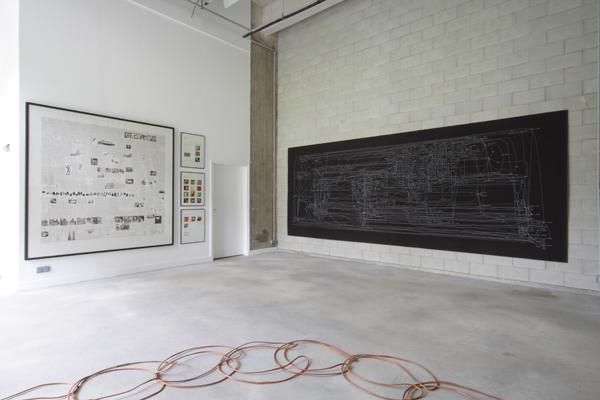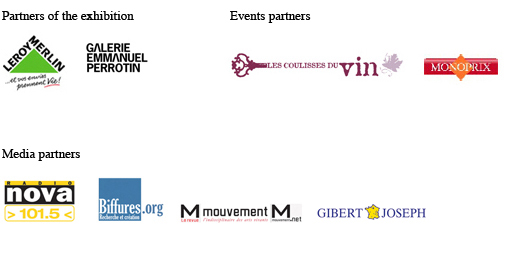Diagonal Argument

- View of the exhibition "Diagonal Argument", Bétonsalon - Center for Art and Research, Paris, 2008.
An exhibition for those who like gardens of forking paths
Artists: Bad Beuys Entertainment, Gilles Barbier, Claude Closky, Collectif 1.0.3, Eric Duyckaerts, León Ferrari, Alexandra Grant, Julien Prévieux, Michael Snow, Mürüvvet Türkyılmaz, Keith Tyson
Curators: Isabelle Le Normand and Florence Ostende
Collaboration with the laboratoire MSC (Matière et Systèmes Complexes), Paris 7

- View of the exhibition "Diagonal Argument" with Michael Snow, High School, 1979, spiral-bound notebook. Collection Bibliothèque Kandinsky, Centre Pompidou. Bétonsalon - Center for Art and Research, Paris, 2008.
In the sixties, American philosopher and sociologist Ted Nelson started taking computer training classes to help him write his philosophy books and organise his ideas, because he could not control the stream of thoughts running through his head. He was hoping to find a way “to create a document based on a vast body of nonstructured and non-sequential ideas". He wanted to be able to write a paragraph where doors could be opened to reveal thousands of new possibilities that could not be seen at first sight.
Dreaming of a super brain with unlimited potential for knowledge, this new process could store endless tree structures and function by an association of ideas and hyperlinks. Ted Nelson coined the word “hypertext" in 1965 and created the Xanadu project which prefigures the Internet. Conceived as a wide computer network, it would make books available at anytime to everyone everywhere. Unfortunately this project failed and Nelson himself admits he still scribbles his ideas on Post-it notes classified by date.
Inevitably, with an intense organisation and classification of thoughts, one risks having the “tree" structures start to resemble a labyrinth. The initial ideas get lost. The exhibition Diagonal Argument mirrors the progression of a method trying to seek and find its way through and struggles through the entanglement of its own thought process. It is is the story of a method making the hopeless attempt to control the maze of hyperlinking and the ramifications of ideas.
As a tribute to one of Eric Duyckaerts’ performances and Georg Cantor’s well-known mathematical demonstration, Diagonal Argument is a project in the shape of a zigzag that embraces forking methodologies, oblique strategies and the dizzying analogies. Far from following a linear structure, this exhibition gathers artists whose works deliver the secret of their own method by experimenting with alternative reasoning and conceptual tools to create an equivalent to the system of mind-mapping.
To understand this project, picture a crab dancing in a garden of forking paths while demonstrating the fundamental rules of graph theory.
The exhibition will be accompanied every Saturday by a comprehensive program of performances, lectures, screenings and talks, gathering artists, philosophers, writers, curators, art critics as well as the exceptional participation of scientists from the Laboratoire Matière et Systèmes Complexes located next to Bétonsalon in the heart of the University Paris Diderot. Diagonal Argument is an exhibition specifically curated for
Bétonsalon, a unique center for art and research in Paris.
Isabelle Le Normand and Florence Ostende



Share